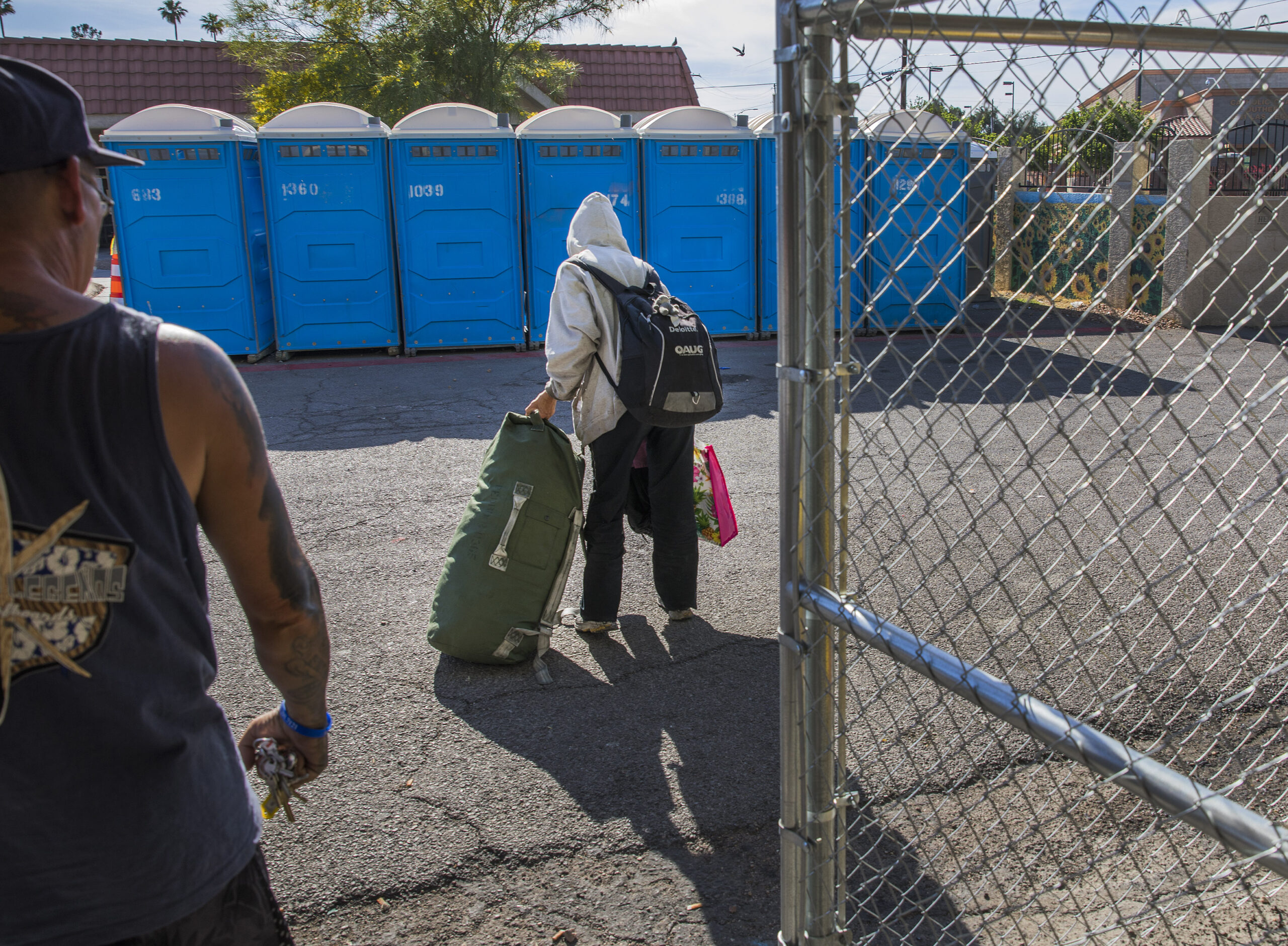Intervention team helping the homeless looks to expand its reach

Lou Lacey was a homeless man in Las Vegas for three years. Now, he is the director of an outreach program working to get Las Vegas homeless people from the streets to housing as well as provide outreach social services.
Just this week, in a partnership with Metro Police, Lacey and his team helped a family of four — one member a 4-year-old with Down syndrome -— find a home after they were found living in a tent behind a Taco Bell.
He says that when they encountered the boy in the desert, he was non-verbal.
“By the time we got done working with him, which was about a month later, you could see he was so full of joy and so responsive,” Lacey said. “That’s why we do what we do.”
On Tuesday, Clark County Commissioners listened to Lacey’s presentation about the Mobile Crisis Intervention Team (MCIT) he operates through HELP of Southern Nevada, a program to help low-income and homeless families and individuals in the community.
After the presentation, County Commission Chair Marilyn Kirkpatrick said she has met some people who have been homeless 20 or 30 years. Many of them, she said, don’t want to be separated from loved ones or a pet, even if it’s just temporarily.
“What is their reasoning for not wanting to go into the shelters?” she asked Lacey. “How do you break that barrier into getting them into that short-term to make a long-term investment?”
MCIT is the largest mobile-outreach team in Southern Nevada. The program is funded through Clark County Social Services general fund. As part of their strategic plan, MCIT is also looking to expand community engagement from the $12 million allocated to them from the marijuana fund, according to Michael Pawlak, director of the department of social services.
Lacey said the program operates in two teams of six people that run two different 10-hour shifts Monday through Sunday. The teams up in the mountains or down in the valley’s storm drains provide “comprehensive coordinating services for homeless individuals living in places not suitable for habitation,” he said.
“I’m going to break this down, all right? What we do is this: We go out into the community and we bring homeless individuals social services that they may not go into or try to receive on their own,” Lacey said.
He explained that his team uses a multi-engagement paradigm where they reach out to homeless individuals several times to encourage them to receive services. These services include housing assessments, emergency food, hygiene kits, water, transportation to shelters or hospitals, or help with family communication. The teams are always on-call.
“We can effect a change. People can be reached. We just go to get out there and reach them,” said Lacey.
HELP of Southern Nevada President Fuilala Riley said MCIT cannot enforce laws, make people move, provide cleaning services, respond to individual calls of “homeless sightings,” provide health and safety checks, or make someone accept services.
“I know that you have to bring social services to the homeless individuals because I was homeless, and the last thing I wanted to do was go and sit somewhere and try to get services when I stunk or my mental health was off the charts, or if I was high and I just couldn’t get it together,” Lacey said. “I wish there was something like this when I was homeless. I might not have had to go through some of the stuff I went through, and some of it was pretty horrific.”
Clark County has more than 8,000 square miles so the team can be working anywhere from Mesquite to Logandale, including all of Las Vegas and Sandy Valley, he said. Out of the 6,000 homeless individuals MCIT reached last year, almost 4,000 were unsheltered and more than 300 individuals were living in the 500 miles of tunnels underneath the city, an increase of 50 people from last year.
Another area of focus is reaching the homeless that reside in the storm drains and getting them out, especially before a storm comes.
“The most tragic thing is that when we’re working with them, we go down one week and there’s a rain event and we go down another week they’re not there no more,” Lacey said. “It’s not the water that kills you, it’s all the stuff that comes flying out there that gets you.”
Kirkpatrick suggested having the team partner with UNLV students who could use the field work as clinicals to help address homelessness in the region.
Lacey said the longer someone is on the streets, the longer it takes to exit homelessness. He says there is usually something that drives homelessness, whether it be mental health, substance abuse, or a horrific event. These people end up on the street, and the longer time goes on, the more they become okay with it.
“I know from my homelessness, there was a point I quit for a minute and said I’m invisible and quit,” said Lacey who says MCIT works because they come back to continue a relationship and a dialogue with homeless individuals. “The whole point is giving people hope.”
